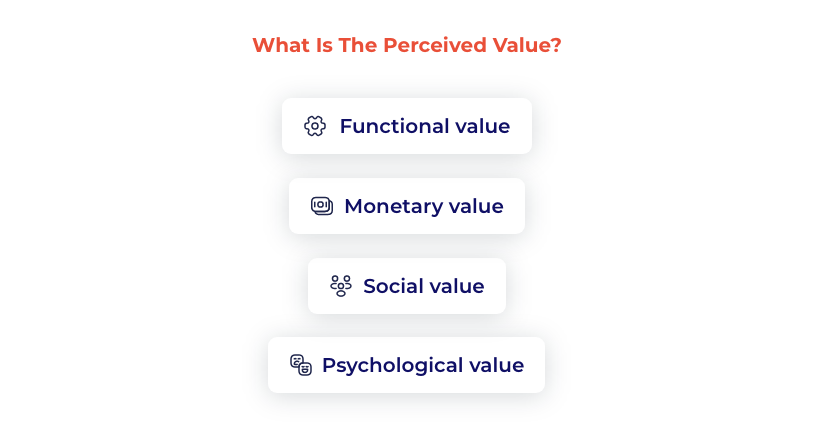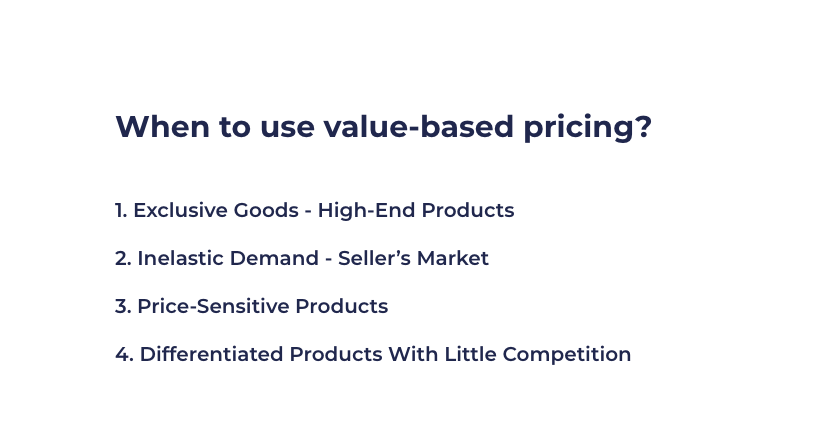Why value-based pricing is important and how to implement it
At its core, Value-based Pricing is a pricing strategy that focuses on the perceived value of your product or service in the eyes of your customers, learn why the perceived value is important for you as a business.

In the highly competitive world of business, the way you set your prices can make or break your product or service. One pricing strategy that could set you apart from the competition and improve your profits is value-based pricing. In this blog post, we will take a deep dive into the nuances of value-based pricing, discuss its advantages, and offer practical advice on how to incorporate it into your business strategy.
What is value-based pricing?
At its core, value-based pricing is a pricing strategy that focuses on the perceived value of your product or service in the eyes of your customers. It is a customer-centric approach that contrasts with the traditional cost-plus pricing model, which calculates prices based on production and overhead costs.
Value-based pricing is a carefully crafted strategy that considers the value your product or service delivers to your customers. Instead of setting prices only based on cost, this approach lets you align your pricing with what your customers are willing to pay for the value they receive. Value-based Pricing revolves around your customers. You can tailor your prices by understanding their needs, preferences, and the value they place on your offering. This strategy demands customer-centricity, market research, and the ability to listen and adapt.
What is perceived value?
To implement value-based pricing effectively, you must understand what your customers perceive as valuable. It’s not about how much it costs you to create your product or service - it’s about what your customers think it’s worth to them. This perception is influenced by a mix of factors like customer psychology, personal preferences, and what’s happening in the competitive market.
A good starting point is figuring out what problems your customers face and how your product or service solves them. For example, if your software can save a business 10 hours of work every week, the value isn’t just in the software itself - it’s in the time and effort the business saves. On the other hand, for a luxury brand, value often comes from things like exclusivity, high-quality materials, or the prestige of owning the product.
It is the price they are willing to pay
Understanding the price your customers are willing to pay is crucial to capturing that value. Therefore, there are several things to consider when finding the perceived value.
Firstly, you need to consider your company’s brand value. What is your brand image and reputation? Does it significantly impact perceived value? For example, a strong, trusted brand often has an increased perceived value and pricing flexibility compared to companies with a weak brand.
The next thing you should consider is who your target customers are. Are you serving different customer segments that may vary in their perceptions of your brand's value? Moreover, you must understand your target audience’s preferences and willingness to pay.
For a customer, there are four things to consider before buying a product or service. This is not always something one is aware of before considering how the product or service influences the perceived value:
Functional value
The first thing one considers is the functional value. Does this product or service provide a solution, and will it serve the problem the customer is trying to fix?Monetary value
The second is monetary value. Does the customer feel that the product or service is worth the money it costs?Social value
The third thing is the social value the product or service provides. Does it allow the customers to connect with other people because the ones they’re socializing with also see this product as having a high value?Psychological value
The last thing is the psychological value. Does the customer feel better after buying the product or service, or does it help them express themselves emotionally?Using the PriceShape platform, you can track the product performance in every market. You can divide your products into groups and set automatic price-changing rules that fit each group.

When is value-based pricing good for you to consider?
Now that we have the definition of perceived value in place, we can start looking at the value-based pricing strategy. This is not a one-size-fits-all strategy but can be highly effective in specific situations.
For example, if you offer a unique product or service that sets you apart from the competition, value-based pricing can help you capture the premium your offering deserves. Value-based pricing isn't limited to a particular industry but is frequently employed in the luxury goods sector. It's also found in consumer staples, where slight price changes can significantly affect consumer choices.
Value-based pricing requires ongoing communication with your customers. Understanding their evolving needs and preferences allows you to adapt your pricing strategy and continually enhance your offerings. To set the right price through value-based pricing, you will need to understand the market conditions and your competitors' prices. A pricing tool like PriceShape can help you collect all the necessary data.
How to do value-based pricing
To illustrate the effectiveness of value-based pricing, let's explore specific scenarios where this strategy shines.
Exclusive goods - high-end products:
If you sell high-end, exclusive products that cater to a niche market, value-based pricing can help you extract maximum value from customers who value uniqueness and prestige. This could, for example, be a luxury handbag.Inelastic demand - seller's market:
In cases where the demand for your product is inelastic, meaning that customers are relatively insensitive to price changes, you can charge premium prices. Value-based pricing empowers you to do just that. One of these goods often found in this category is tobacco.Price-sensitive products:
For everyday goods where customers are sensitive to even small price fluctuations, value-based pricing can help you balance pricing with the value you provide, ensuring you maintain a competitive edge. This applies to everyday goods like milk and flour.Differentiated products in a blue ocean market:
In a market with little to no competition, value-based pricing lets you set the price based on your product's unique value, helping you maximize profitability. This can, for example, be medicine.
The two types of value-based pricing
Value-based pricing isn't a one-size-fits-all strategy; it can take different forms. Here are two primary types:
Good value pricing:
This approach involves pricing your product or service at a level representing excellent customer value while allowing for a reasonable profit margin. It's a strategy often seen in competitive markets where differentiation is difficult, but delivering value is crucial.
Value-added pricing:
In Value-added pricing, you enhance your product or service with additional features, benefits, or services that justify a higher price. It's common in industries where customers value customization and personalization.
What is the difference between cost-plus pricing and value-based pricing?
It's crucial to understand the distinctions between traditional cost-plus pricing and customer-centric value-based pricing.
Cost-plus pricing:
- Prices are determined primarily by production costs.
- Profit margins are set based on predetermined percentages.
- Customer preferences and perceived value are secondary considerations.
- Tends to result in price rigidity and a disconnect from customer value perception.
Value-based pricing:
- Prices are set based on the value customers perceive.
- Profit margins are a result of the value created for customers.
- Customer preferences and perceived value are at the forefront.
- Promotes customer-centric pricing, adapting to market changes and customer demands.

Common mistakes to avoid with value-based pricing
While value-based pricing can be incredibly effective, it has challenges. Many businesses stumble along the way, making missteps that can undermine the success of this pricing strategy. Here are some common mistakes to watch out for—and tips on how to avoid them:
Failing to understand your customers:
Understanding what your customers truly value is the foundation of value-based pricing. Skipping this step or relying on assumptions can lead to misaligned pricing that either undercuts your profit margins or alienates potential buyers. Invest the time to conduct surveys, gather feedback, and understand your customers’ needs and preferences. Without this insight, it’s impossible to set a price that reflects the value they see in your product.
Ignoring market dynamics:
Value-based pricing doesn’t exist in a vacuum. If you fail to account for market conditions - such as competitor pricing, economic trends, or customer expectations - you risk overpricing or underpricing your product. Regularly evaluate where your product stands and adjust to stay competitive while maintaining perceived value.
Failing to monitor and adjust
Value-based pricing isn’t a “set it and forget it” strategy. Customer preferences, market trends, and competitor activity can all shift over time. Failing to review and adjust your pricing regularly can leave you out of sync with what your customers value. Make it a habit to gather feedback, analyze performance, and tweak your prices to align with customer expectations. This is what the PriceShape software does to perfection with dynamic pricing.
By avoiding these common mistakes, you can set your business up for success with value-based pricing. The key is to stay customer-focused, adaptable, and always willing to refine your approach as you learn more about what your audience values most.
To sum up
In an era where customer-centricity and differentiation are key to success, value-based pricing stands out as a strategic pricing model that can help your business thrive. By understanding your customers' perceptions of value and aligning your prices accordingly, you can capture the value you deliver and maximize your profitability. Whether in a competitive market or catering to a niche audience, value-based pricing offers a path to success.
PriceShape is a pricing tool that can help you with dynamic pricing, pricing rules, and automate your pricing strategies. We can also provide you with a market overview of your competitors' prices and your price position.

